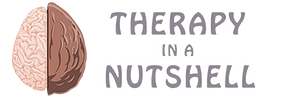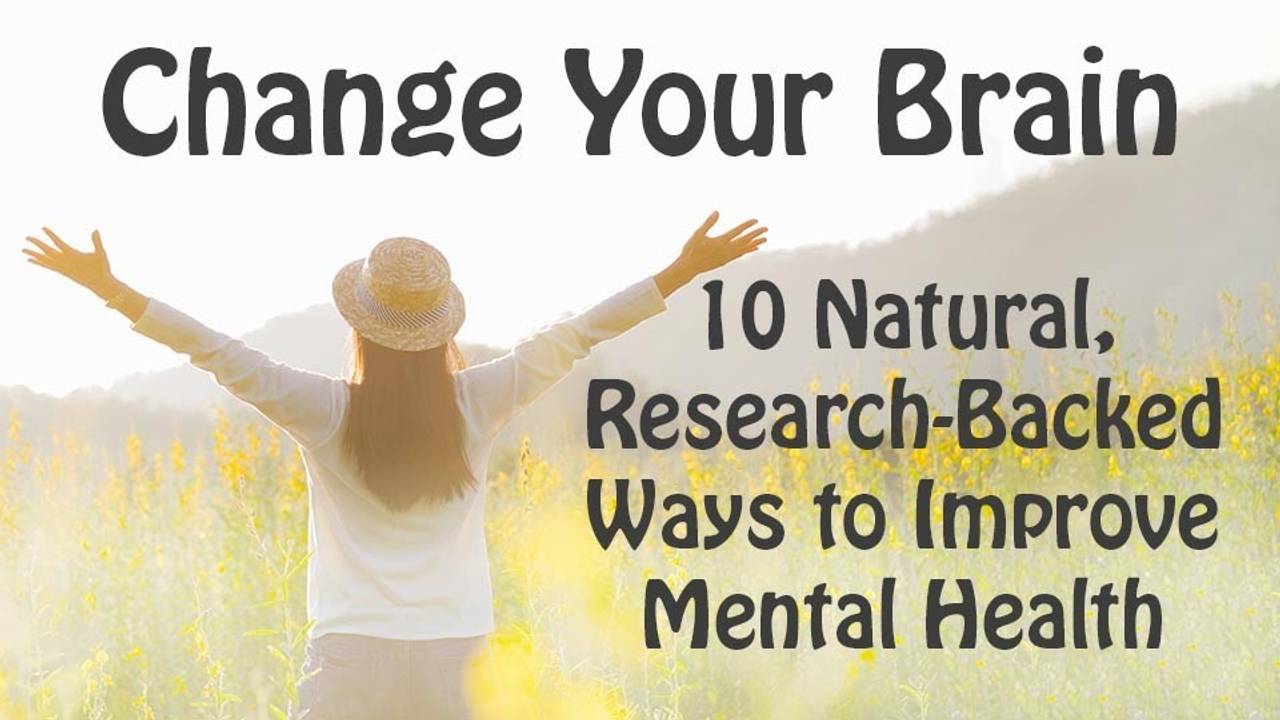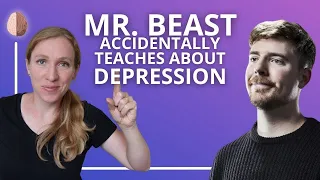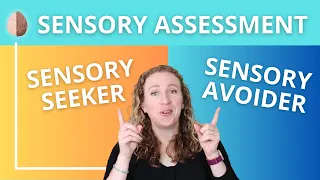Have you heard about ketamine therapy? Well, let me tell you about it.
If you have severe depression, PTSD, or anxiety that just won’t go away despite therapy and medication, you should know about ketamine. Thirty to 40% of people with depression have treatment-resistant depression.
So that means they’ve tried at least two types of medication and it isn’t helping. And scientists and doctors are really excited about the potential for ketamine as a new and effective treatment for mood disorders, PTSD, and chronic pain.
How Ketamine Therapy Helped My Client
But first, story time. So let me tell you about Barbara. Barbara was a client I worked with for about 18 months.
She had experienced abuse as a child, gone through a couple of divorces. She was on Prozac for over a decade for depression, but after retirement her depression became very severe.
She couldn’t get out of bed. She cried all day. She wanted to die. Her husband kept the guns and the Tylenol locked up.
We worked and we worked and we worked in therapy. We worked through old trauma, and we tried to build a healthier lifestyle. She ate healthy, she exercised, she got sunlight, but the black dog of depression wouldn’t go away.
So, we collaborated very closely with her psychiatrist and doctor, and she went through over a year of trying various combinations of psych meds: SSRIs, lithium, Adderall, trazodone, valium, vraylar.
We explored nutrient deficiencies and research-backed supplements. We tried all kinds of things. And she would have a few weeks of feeling normal followed by a few months of just wanting to die.
We had a lot of sessions where I wasn’t sure if she’d make it through the next week, but we also didn’t have the option of hospitalization.
Finally, her doctor recommended that she tried ketamine treatments. She couldn’t afford them, but they applied for a scholarship, and Johnson & Johnson eventually funded her treatment, and it was life-changing.
For the first time in decades, Barbara felt the weight lift. She said the experience was trippy, that it was really a bizarre experience to receive that medication, but she also felt her mood improve almost immediately.
She felt more connected to her husband. She started to be able to leave the house and to leave behind some old ways of thinking.
Stress didn’t pound her like a semi-truck the moment she woke up in the mornings.
And all of a sudden, she was able to work a little bit more in therapy.
She became gentler with herself and with her emotions. She allowed herself to feel sadness but also to feel more hope and excitement and love. Now, she continued ketamine treatments for three months, and now she comes into sessions just excited about the progress that she’s making.
She feels alive again. She can feel happy again. She still has these moments of discouragement, but they last hours instead of months. So, the other day I was in a session with her and I was challenging her way of thinking about a situation.
I was challenging her to step away from seeing herself as a victim, and that was really tough for her. And for a moment she broke down like she used to in the past. She started crying, and she wanted to give up.
She got mad at me, and she played the victim. She said, “Why me? Will I never get better? Why should I even live?” But then I saw her do something I’ve never seen her do in over a year-and-a-half of treatment. She wiped her eyes, and she looked up at me, and she said, “I’m gonna think about that differently.”
And by the end of the session, she completely surprised me by saying, “Wow, what a great session we’ve had.”
What Exactly Is Ketamine?
Now, I think it was fair to say that ketamine has changed Barbara’s life for the better. So, what is ketamine?
Ketamine is a medication that has been approved by the FDA as an anesthetic for decades, and in the 80s and 90s it became a party drug known as Special K and a bunch of other names.
But scientists in the late 90s started to realize that glutamate, a neurotransmitter in the brain, may play a huge role in depression. So, they started to look for a medication that impacted glutamate.
And voila, ketamine was the drug. Now, ketamine is known to modulate the glutamate receptors in your brain. Glutamate is an amino acid that the neurons in your brain use to communicate.
Does Ketamine Help With Treatment-resistant Depression?
So how does it work? Chronic stress and severe depression literally cause the neurons in your brain to shrivel. Now, these are the communication pathways of the brain, and the little fingers of the neurons, the dendrites, they get less branches, the axons get shorter and blunter.
And brain imaging shows that in depression, the prefrontal cortex – that’s the thinking part of your brain – shrinks. So basically, what this means is that your brain’s ability to send messages to think and to process information decreases.
And this can cause a snowball effect, making it hard to change how we think, hard to feel differently, which leads to more stress and depression. Because ketamine increases the level of glutamate transmission, ketamine quickly increases production of BDNF, which is brain-derived neurotrophic factor. This chemical has been called the fertilizer for the brain. Now, BDNF is a protein that helps promote the growth maintenance and survival of these neurons.
So, in other words, it basically enhances neuroplasticity. That’s the ability of your brain to grow and change and adapt.
So, ketamine is like a message to your brain to start triggering the growth of new neurons.
It primes your brain for neuroplasticity to lay down newer, healthier connections in your brain. Ketamine has been described as a pattern disruptor, or it’s like pinging or jump-starting the brain. It’s like a reset.
Ketamine causes a rapid onset of neuroplasticity at the cellular level and the functional level. Basically, it changes how you think about and interpret life.
Now, because we’re just beginning to understand ketamine, researchers don’t know all the ways it affects the brain yet.
So how does it work? Where SSRIs slow the reuptake of serotonin, ketamine targets a completely different system in the brain: glutamate and connectivity.
SSRIs usually take three to eight weeks to see results, and the impact of the drug really probably benefits about 30% of people.
The placebo effect and spontaneous recovery impact another 30 to 40% of people, but that still leaves, you know, around 35 to 40% of people who aren’t seeing results from SSRIs.
But ketamine reduces the symptoms of depression usually quite rapidly, within 24 hours, and the effects of one treatment can last weeks to months.
So, ketamine reduces the symptoms, but we don’t really know if it treats the underlying causes of depression. So obviously, when depression is a normal response to challenging experiences like a divorce or grief or sadness or even just how you talk to yourself and beat yourself up, there’s no drug that’s going to solve these problems.
But ketamine may give the brain enough of a leg up so that it can get functioning again to face those problems and think about them differently.
We still don’t have enough studies to know the effectiveness on a large scale, but initial outcomes appear to show effectiveness with 60 to 85% of people with severe depression.
And this is huge for a group of people who felt no meaningful improvement on antidepressants.
Types Of Ketamine Therapy
Okay, so what does treatment look like and feel like? There are two types of ketamine treatments, infusion and Spravato, which is a nasal spray.
So, ketamine infusions are the most common, but they’re off-label, which means that ketamine is not approved by the FDA as a treatment for mood disorders. It’s only approved as an anesthetic. Spravato is nasal spray that was approved by the FDA in March of 2019 as a breakthrough treatment for depression.
Because it is regulated, it has guidelines, including that the treatment be given in a clinic or a doctor’s office and that the patient be carefully monitored afterwards.
With both types of treatment, you should be seated in a quiet, comfortable room. During an infusion, it’s basically like going on a trip.
My client Barbara described it as kaboosh, like really wild. For some people, their senses are heightened. Often people will listen to music or a meditation. People often describe an overall sense of well-being, a sense of connectedness. They describe being able to see the world with fresh eyes or feeling floaty or disconnected from their body.
And some people feel nauseous or dizzy for a short while afterwards.
“Everyone should feel what it what it is like to feel this connected to everyone.”
“I’m, yeah, relaxed and happy. I’m smiling inside.”
Now, a typical treatment would be six infusions spaced out every two to three weeks. And it really is best when combined with other treatments, especially therapy, so that people can make these new, healthy thinking patterns and they can interpret the changes that they’re experiencing.
So, who is ketamine treatment for? Well, right now Spravato is only approved as a treatment for depression, and ketamine infusions are being used off-label, but there are some initial promising results showing that that ketamine treatments can be helpful for depression, anxiety, PTSD, chronic pain, and migraines, also showing some effectiveness with anxiety, addiction, bipolar disorder, and just for people who haven’t seen results from regular treatments.
Risk, Benefits, And Cost Of Ketamine Therapy
Okay. So now let’s talk about the risks, the benefits, and the costs of ketamine treatment.
With ketamine treatment, you don’t have to take it every day like an SSRI, and you can often see results quite quickly compared to SSRIs, which often take three to eight weeks.
So usually within 24 hours you’ll notice a difference. But ketamine treatments are still very experimental. The risks and the long-term outcomes are basically completely unknown and unstudied. Many doctors for this reason choose to use it as a last resort.
There’s also some initial research showing that ketamine abuse or overuse can lead to lesions on the brain.
We don’t have data on how long or how frequently people need to take it. And because ketamine infusions are an off-label use of the drug, insurance companies usually won’t pay for it, and it could be very expensive.
Like other drugs, ketamine can also be addictive, though the risk seems pretty low. And because ketamine has psychoactive properties, you can have a bad trip, which is like a scary or terrifying experience during an infusion.
Now, most people have a positive experience, but some don’t. About 20 to 30% of people don’t see positive results. Also, ketamine is not like a one-time cure-all. It seems that to maintain the benefits, it needs to be paired with therapy and continuing treatments down the line.
So, my takeaway from the research I’ve read on ketamine treatments is that if I were experiencing severe, persistent depression and multiple attempts at treatment weren’t working, I would absolutely consider giving ketamine a try, but I would do it under the supervision of a doctor with lots of experience doing ketamine treatment. I would not do any of the at-home ketamine treatments you can buy online, just because there are too many unknown factors.
All in all, ketamine is an exciting development in the treatment options for people with severe or treatment-resistant depression. Okay. I hope you find that helpful learning about another option for treating depression.
A Good Option To Cope With Treatment-resistant Depression
When it comes to mental health problems like depression or anxiety, some people think that the only thing they can do is just cope with it or that the only options available are therapy or medication. While these are good treatment options, they’re not the only options available to you.
Your amazing brain has this inherent ability called neuroplasticity. It can actually change its structure, which means we can change the way we think, and we can live healthier and happier lives. In the course Change Your Brain, I’ll teach you 10 essentials mental health skills that research has shown to be effective at treating depression and anxiety.
You’ll learn how you can take simple actions to fight for your mental wellness. In this course, you’ll learn all about the mind/body connection and simple ways to improve your mood in a few minutes every day.
You’ll gain an understanding of how your body instinctively reacts to stress, but how it also can instinctively resolve stress. You’ll learn how to think more positively.
The 10 essential skills in this course can provide options you didn’t think you had. And this is all for less than the cost of one therapy session.
If you’d like to learn more about how you can change your brain, click the link below.





